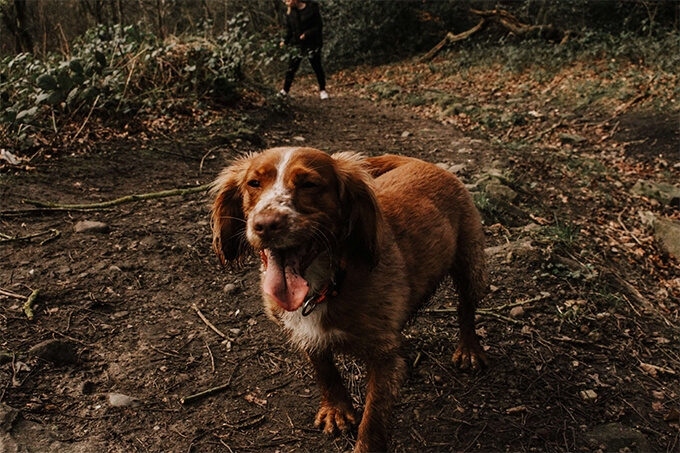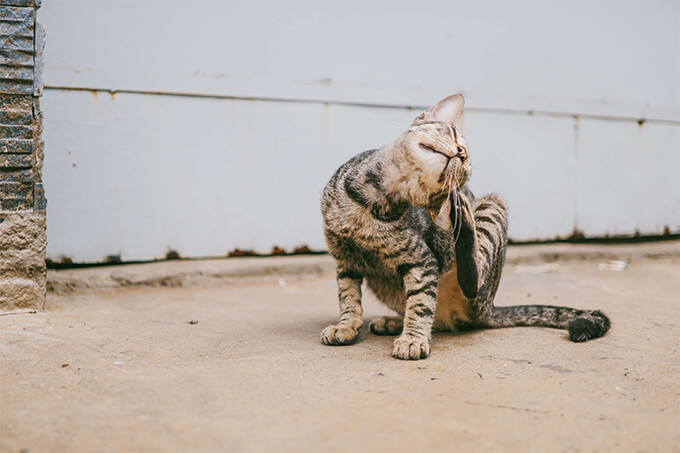March 4, 2021

Flea allergy dermatitis (FAD) is a very common disease in pets caused by an allergy to the saliva injected into the pet when the flea feeds.
There is a difference between flea bite dermatitis and flea allergy dermatitis. Fleas themselves can cause itching due to the direct irritation from their bite. This is flea dermatitis. In FAD, the allergy to flea saliva means that your pet's immune system produces all sorts of substances which greatly magnify the severity of itching.
In FAD-affected pets, there is usually no relationship between the number of fleas found in the coat and the severity of the itching. Non-allergic animals may have heavy infestations and not be affected, while those with FAD usually have very few fleas, but severely self-traumatized due to the intense itching. Sensitive animals tend to be very good at removing fleas.
How can FAD manifest in pets?
Itching can manifest in a number of ways, including scratching, licking (particularly the paws), biting, chewing, and rubbing the body along the ground.

Allergic skin is normally red and inflamed, which raises its temperature and humidity and creates the perfect environment for bacterial and fungal growth. Skin infections are common secondary to allergic skin disease. Most of the damage in FAD is caused by self-trauma, the animal scratching itself.
"[Animals] with FAD usually have very few fleas, but severely self-traumatized due to the intense itching."
Dogs with FAD tend to suffer lesions and hair loss in a "Christmas tree" pattern over the rump and tail base. Flea dermatitis papules (red, solid lumps in the skin less than a third of an inch in diameter) tend to be found all over the body bitten by fleas.
Flea-allergic cats, on the other hand, suffer from miliary dermatitis developing 'blackheads' and hair loss along their back line. This is the so-called flea allergy 'racing stripe', although this can also occur with other skin diseases. Many owners don't know that most itchy cats do not scratch but instead groom, so while they think the cat is frequently washing itself they don't realize that it is actually very itchy.

What is the best treatment for FAD?
Pet Shed's most popular solutions for ridding your pet of fleas
Allergic animals will often have reactions to other things such as food and pollen, and flea infestations can exacerbate these. The 'itch threshold' is a concept where a certain level of 'itch' must be reached before your pet starts to scratch. Itching is usually the result of a number of concurrent factors, so if some of these can be removed, the itch level may fall below the threshold and the animal may stop scratching without every factor being addressed.
For example, the treatment for fleas in a dog with an underlying food and flea allergy may be sufficient to stop the itching, even though the animal still has the food allergy. Therefore, when trying to determine the cause of itching in a pet, the first step is usually to ensure it is on a good flea control regime.
In severe cases of FAD, it may be necessary not only to treat the fleas but also to put the pet on a course of anti-inflammatories to reduce the initial itch. Shampoos, fatty acids, and other non-prescription products can also be useful to alleviate itching. Animals with secondary skin infections will also require antibiotics.
When treating fleas in animals with FAD, a fast-knockdown product which kills adult fleas such as Frontline, Advantage, Sentinel, or Revolution should be used along with treatment for the earlier flea stages to get the flea population under control quickly.
Once the fleas are eliminated, many pets with FAD will return to their old selves in no time. It is advisable to consult your veterinarian if you suspect your pet has FAD, as they will advise you on the appropriate treatment for your pet.
